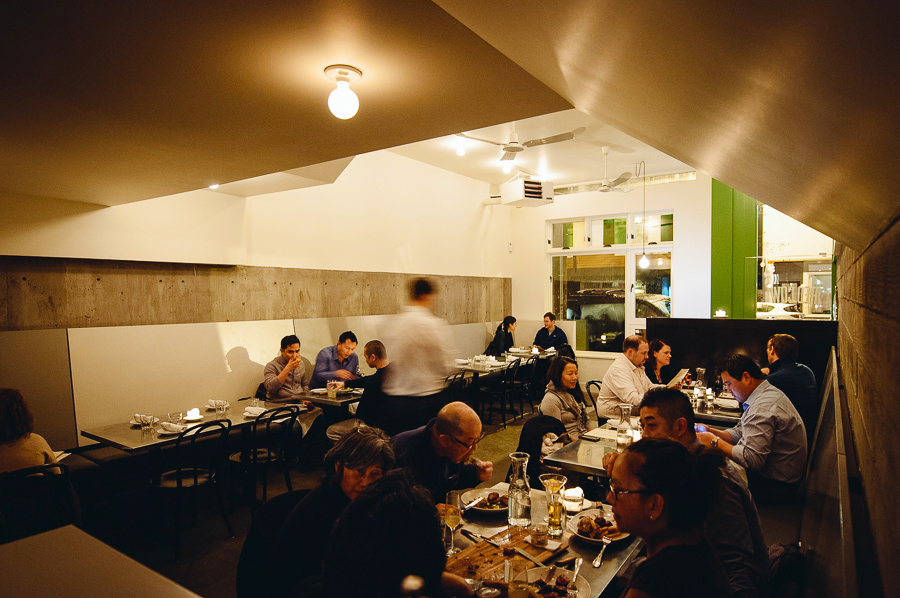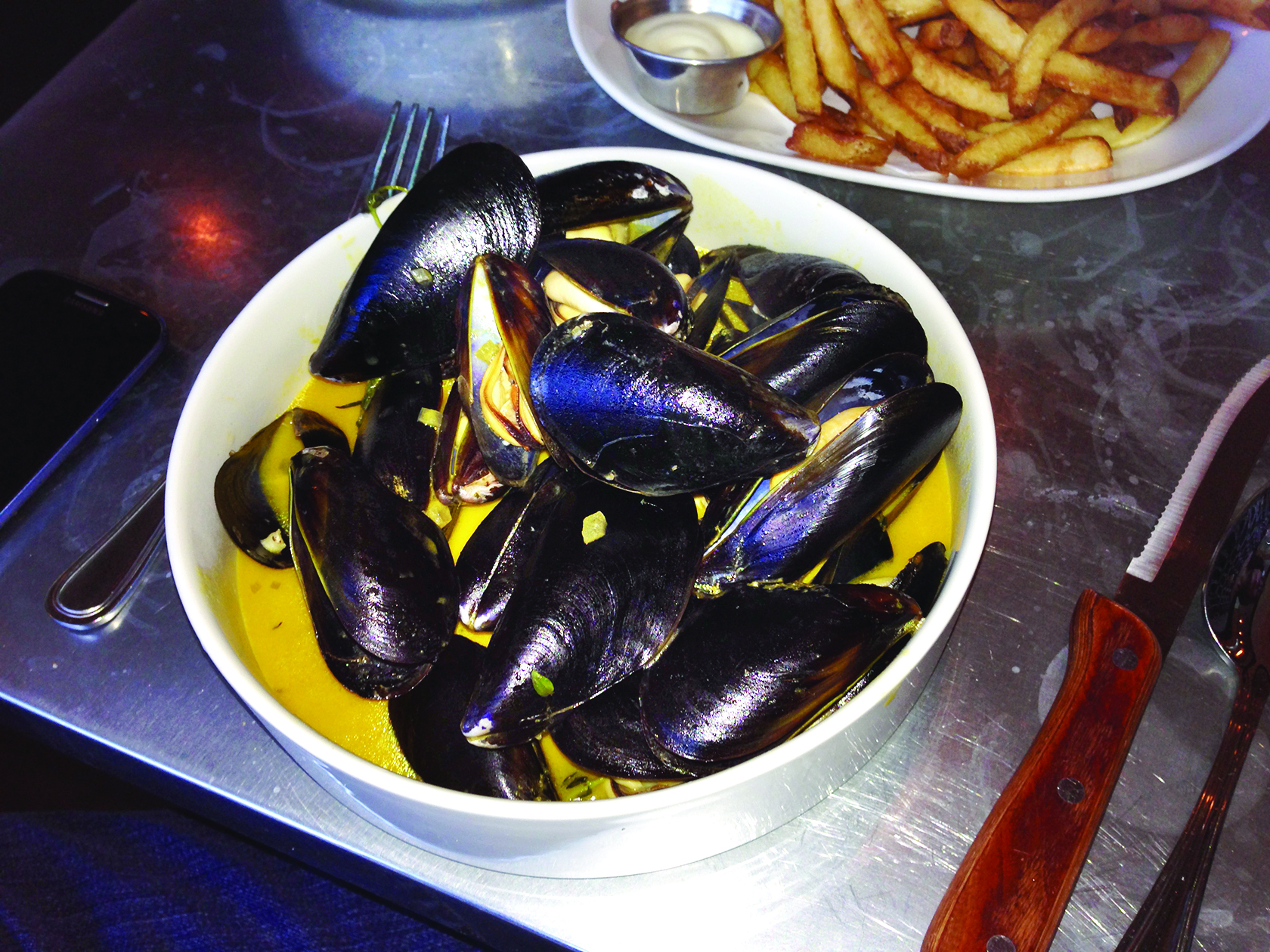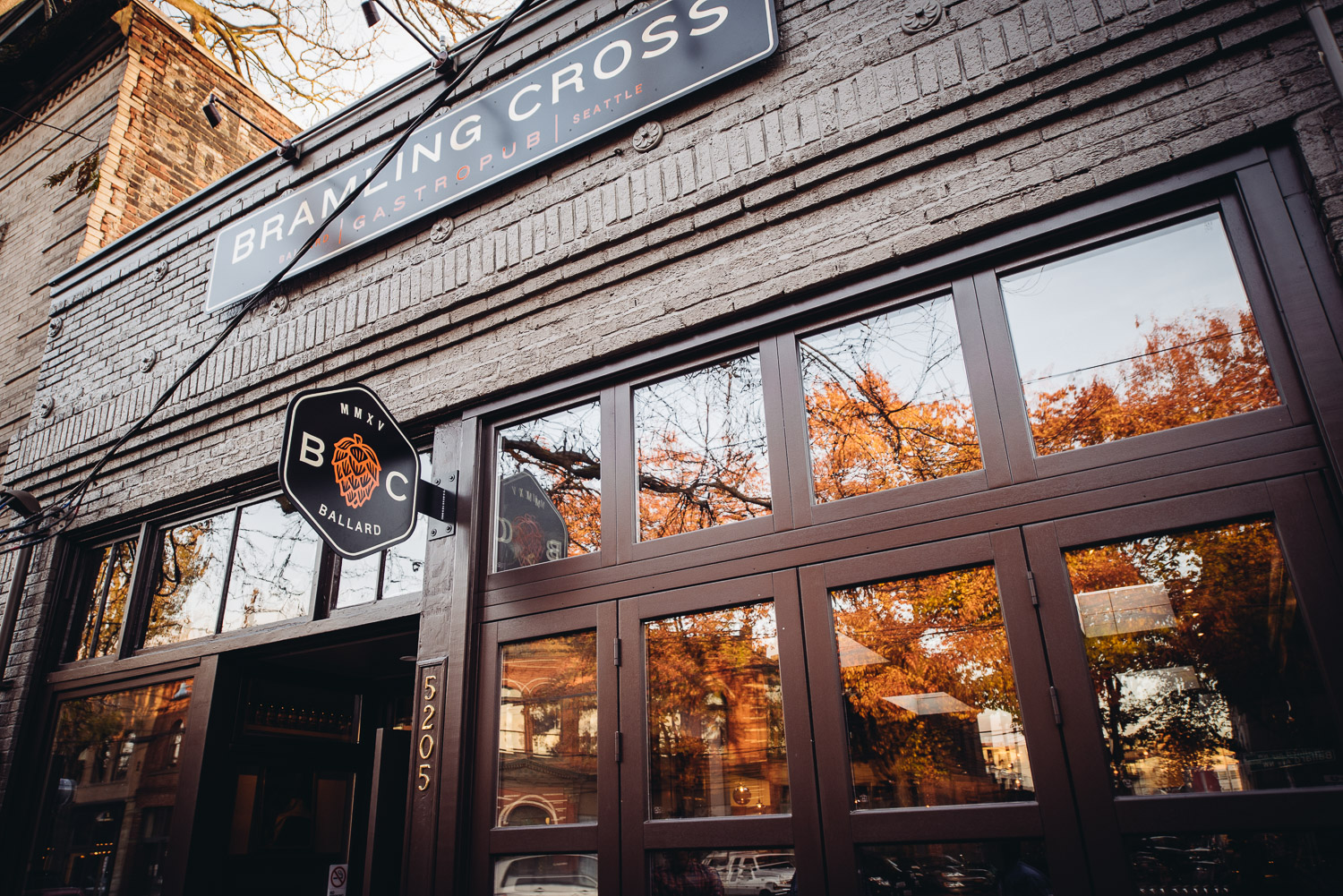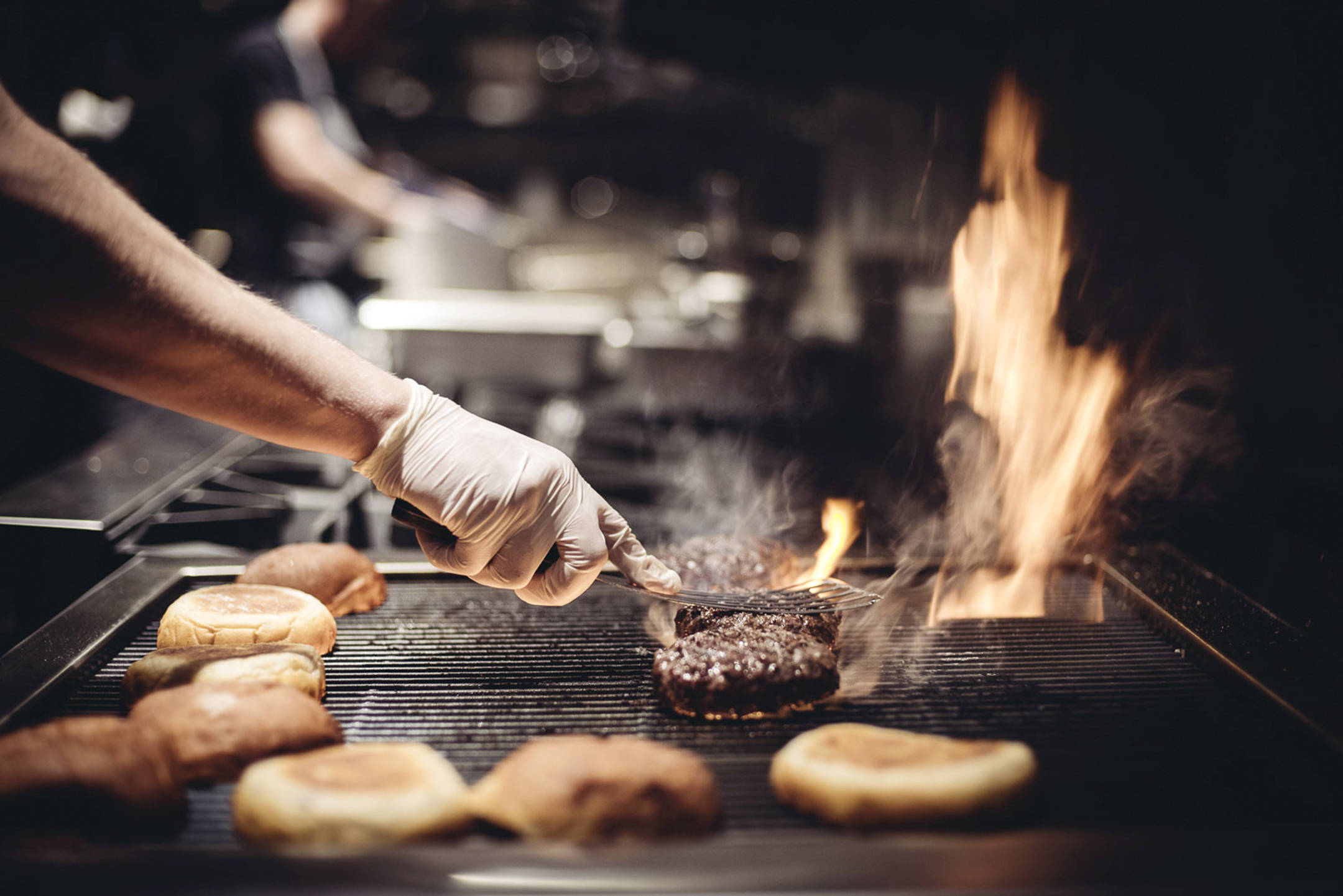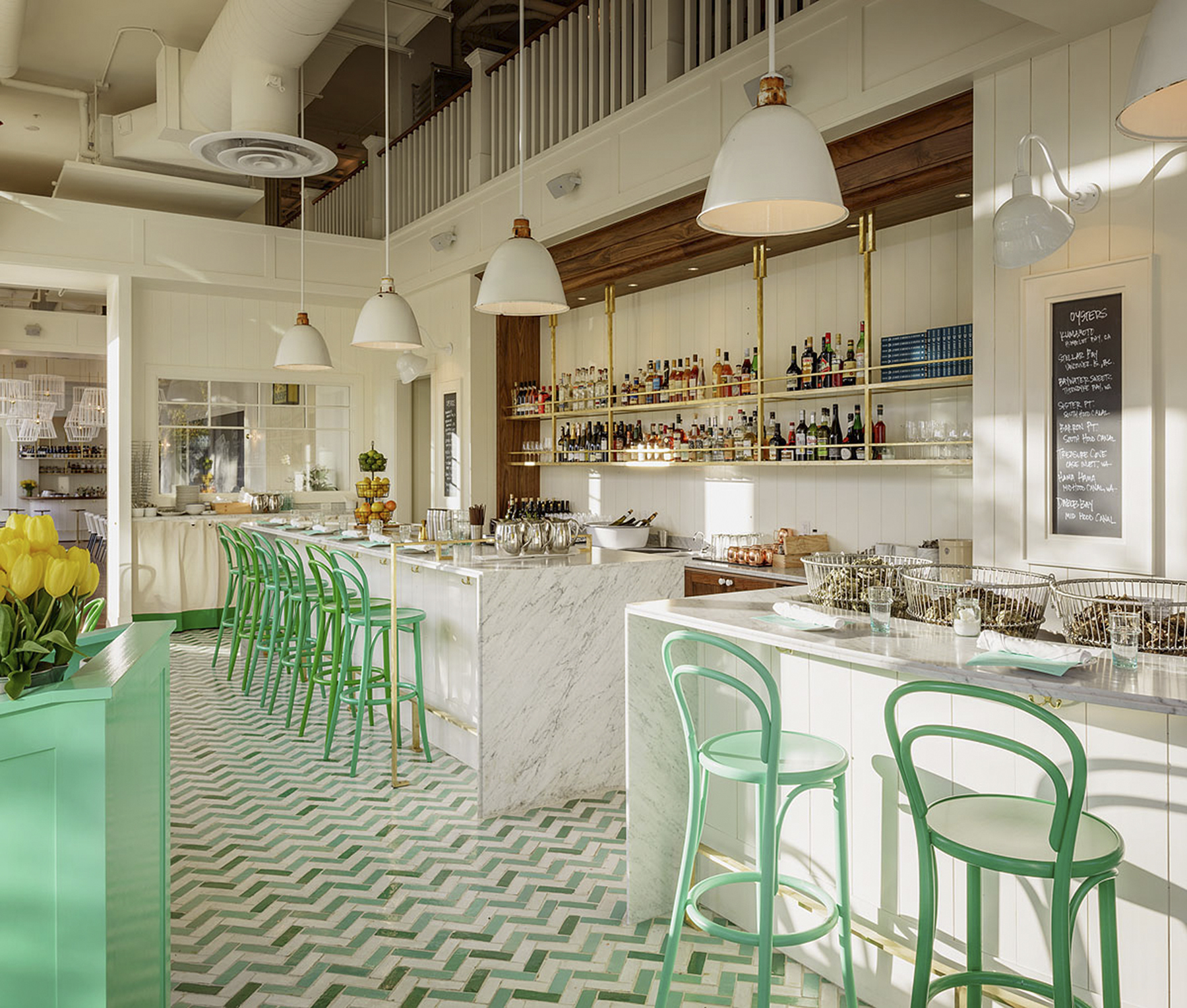As Ethan Stowell prepared to open his eighth restaurant, Red Cow, word on the street was both excited and skeptical. A French steak-frites-style brasserie in Madrona—yay!—but was the renowned Seattle chef perhaps spreading himself too thin? As a regular at Tavolata and a fan of other Stowell restaurants, I’d had the same doubts when mkt. hit the scene last year in Tangletown. Yet Stowell delivered at that location with a menu that offered faultlessly executed seafood, meat, and vegetable dishes with the Pacific Northwest flourishes that he helped make de rigueur in Seattle.
Unfortunately, I cannot say the same for Red Cow. Seattle certainly needed another classic French bistro (we’re low on good ones), but two months in, Red Cow has proven lackluster. On my first trip, a weeknight, we sat in the bar area, where you get just enough of a glimpse of the semi-open kitchen. While there are fish and seafood items on the menu, I decided on both visits to hone in on the hyper-French fare. We know Stowell has perfected scallops, but what will he do with, say, beef tartare and a hanger steak and fries? The answer: not much. The first red flag was the bread, not very crusty and flavorful, but softish and bland. At a French restaurant, good bread should be a given.
When our beef tartare arrived sans raw egg and capers, I was first struck by its color, not the gorgeous ruby-red jeweled tone of most uncooked beef. Instead, it was grayish. I asked the server if the egg had already been incorporated into the dish. She wasn’t sure, but came back to inform us that the egg, the capers, the cornichons, and an aioli had been premixed into it. One bite and that was evident. The tartare tasted mostly like mustard, thoroughly masking the flavor of what should be unadulterated quality beef. I might as well have been eating chicken salad. Fortunately, a lamb terrine was nice, with the flavor of the lamb coming through. However, while the tzatziki sauce it was served with was good, it overpowered the terrine. I opted not to use it. A pork rillette was appropriately moist and fatty and generously portioned, though the mustard on the side, in this case, was needed for a punch.
But the biggest disappointment was the steak itself. My hanger, ordered medium rare, came out medium (as my server agreed) and was sent back. A medium-rare one quickly replaced it, but was so heavy on the salt as to be nearly inedible. Of the four steak sauces to choose from, I went with the bearnaise, which only upped the salinity. My friend and I both were up several times later in the night gulping water. To add insult to injury, the fries weren’t the crispy delights that French frites are meant to be. These were slightly crunchy on the outside and soft in the middle.
On my second visit (a Friday night), I went for the boneless rib-eye, again ordered medium rare, but this time delivered as such. The big hunk of meat was quite fatty, though, and while I know rib-eyes are a fattier cut, there were just too many inedible pieces for $36. This time the steak wasn’t salted within an inch of its life, though the red-wine reduction I chose for it was. The fries, once again, were a let-down. We also tried the roasted half-chicken, another French staple, this one served with Yukon Gold potatoes. It was oddly rubbery in texture, particularly the white meat, which can be an indication of poor-quality chicken or overbrining. It also was lacking that addictive crispy skin that places like Le Pichet have mastered.
Besides meat, we ordered the mushroom tartine, an open-faced French-style sandwich. When we asked the waiter what kind of mushrooms were on it, he hesitated, then said he thought they were hen-of-the-woods. He came back to tell us they were in fact oyster, cremini, and shitakes. The grilled bread was spread with too much goat cheese and the mushrooms were pretty flavorless. This was essentially a bruschetta I could have easily made myself.
The moules frites, however, were among the best I’ve eaten. We opted for the curry sauce, which was so nicely balanced and delicate, melding perfectly with the notes of thyme (the kind of sauce Stowell excels at). The mussels themselves were almost preternaturally plump. I’m not sure where he gets them, but let’s hope he continues to use that purveyor. Roasted Brussels sprouts with bacon and caramelized onions were good, if predictable; the braised kale, though, was cooked in a smothered, dripping Southern style that didn’t pair well with the fatty, soft bacon chunks it was served with. It was all just too mushy, and heavy on the salt as well.
The drinks menu has plenty of the requisite well-made craft cocktails, and the wine menu is exhaustively French in a good way: hitting the major regions of France as well as offering sparklings and roses and a decent number of Washington and Oregon wines too. At dessert, a curated menu of brandies, ports, and Sauternes came with a choice of a chocolate mousse (nice), a pear tart with creme fraiche ice cream, and profiteroles with coffee-butternut ice cream and chocolate sauce (neither of which we had room to try). Coffee was “Starbucks Reserve”—an odd choice given the current preoccupation with small, local roasters. Interestingly, on my second visit there was no reference to Starbucks. Instead the coffee was listed as “Espresso Brew No. 11, Guatemalan Antigua Sun Dried Ethiopian.” A Google search for that confirmed that it was still, indeed, a Starbucks product.
Of all Stowell’s restaurants, this one feels the coziest. Though still incorporating clean lines and concrete and steel elements, there’s lovely dark-gray wainscoting in the bar area, a pretty, curvy, white-painted cutout framing the exposed kitchen, some lime-green glass windows, and a single green Glassy Baby (an homage to the neighborhood, no doubt). A couple of toy cows are strategically placed. A big, beautiful arrangement of colorful flowers would perfectly complete the look.
Here’s the thing:
Reservations are hard to get. On both my visits, the place was packed, mostly with a well-heeled, older clientele, as befitting the neighborhood. But considering the overall dearth of seriously good restaurants in Madrona, does it really come as any surprise? I have no doubt that people will continue to flock there.
Yet considering Stowell is one of our pioneering chefs—one who’s not only helped put Seattle on the culinary map but has consistently brought us excellent neighborhood restaurants—I can’t help but wish he’d given his foray into French food the real strength and consistency he’s known for. Perhaps French isn’t the right fit for him—or has he really spread himself too thin this time? There’s lots of talk about the soon-to-open tiny restaurant behind Red Cow, Noyer, with a daily changing menu that Stowell will supposedly preside over regularly. It’s good to hear that he wants to be back in the kitchen cooking, not just moving on to yet another business venture. But before he does, I hope he’ll bring his laser-focused attention to Red Cow. Only two months in, it’s not too late to make it the standout French bistro it’s purported to be.
nsprinkle@seattleweekly.com
RED COW 1423 34th Ave., 454-7932, ethanstowellrestaurants.com. 5–10 p.m. Sun.–Thurs., 5–11 p.m. Fri.–Sat.
PRICE GUIDE Housemade charcuterie $8–$25 / Beef tartare $14 / Mushroom tartine $11 / Hanger steak (with fries) $21 / Boneless rib-eye (with fries) $36 / Roasted half chicken $19 / Moules frites $18
